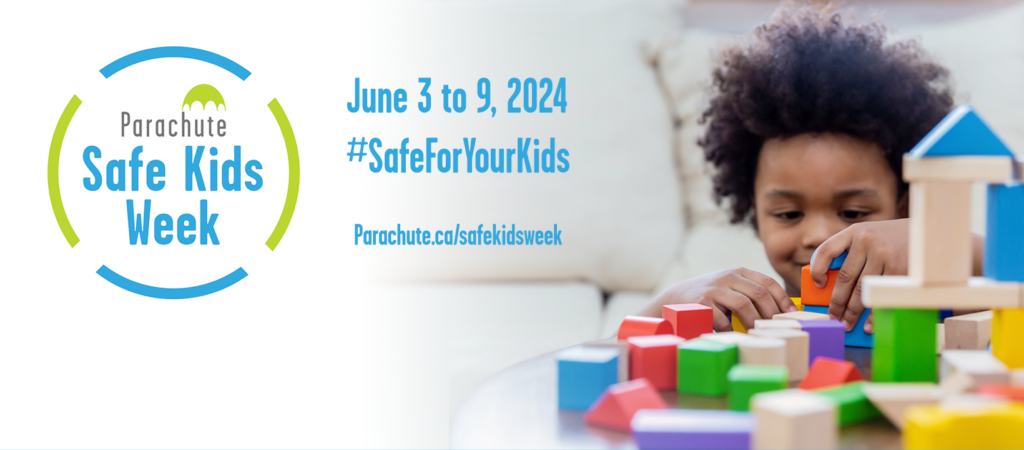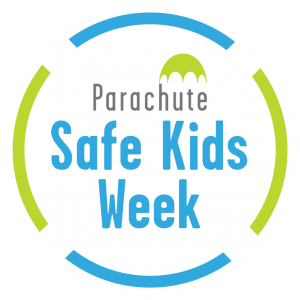Parachute Safe Kids Week is an annual awareness campaign designed to bring attention to predictable and preventable injuries in children. Parachute celebrates Safe Kids Week June 3 to June 9, 2024, this year with the theme of consumer product safety.

Children live in a world that is built for adults. As a result, they can be exposed to hazards that cause serious injury and even death. Parents expect the products they have in their home to be safe – so we’ll tell you what’s #SafeForYourKids.
The term “consumer products” encompass a large number of products in Canada, so Safe Kids Week 2024 will focus on the basics of consumer product safety: for example, did you know that not all products available for purchase in Canada have been tested for safety?
The Public Health Agency of Canada estimates, based on Canadian Hospitals Injury Reporting and Prevention Program (CHIRPP) data, that almost half of injuries to children and youth up to age 19 are related to consumer products.
Safe Kids Week 2024 will look at some products made specifically for children – for example, cribs and toys. We’ll also provide safety tips on other products in the home that adults or siblings use – such as button batteries and window blinds – that can be hazardous to little children.
Product safety tips
Not all products sold in Canada have been tested for safety
Survey results show that most Canadians believe that, if a product is available for sale, it is safe or has been tested for safety. But this is not always the case in Canada, particularly for children’s products. The result is an increasing risk of product-related injuries to children and youth due to their age, cognitive abilities and developmental stage. Injuries from the use of consumer products are common, often serious and sometimes fatal.
Not all products sold in Canada have a standard or regulations they must meet
Check to see if a product has a standard and, if so, the one you’ve purchased meets that standard.
Concern(s) with a product and/or an injury from a product can and should be reported to Health Canada
Anyone can report an incidence from a consumer product; it is voluntary. The more people who report, with more complete information, the more that informs actions that can be taken.
There are many ways to find out if a product has been recalled
- Product manufacturer notification
- Product distributor notification
- Health Canada’s website
Be cautious when buying, accepting, sharing or disposing of second-hand products
Check that the product:
- is in good condition
- has labels that will tell you what standard the product meets (if applicable)
- has an expiry date or manufacture date
- has not been recalled
Be careful using after-market add-ons
For products that have a standard or a regulation, they are tested in original condition, meaning that they are not tested with any after-market products that may affect the way the product functions.
Shopping online and cross-border purchases
To avoid safety issues, before buying:
- check the product hasn’t been recalled or is prohibited (banned) for sale in Canada
- check for product warnings and age recommendations
- know who you’re buying from
- choose reputable sellers that you’ll be able to reach out to if there is a concern with the product
Why age and size recommendations are important
Manufacturers may provide age recommendations or height-and-weight recommendations, for certain products. For instance, many toys are labelled as unsafe for children under three years old, frequently because they contain small parts that can be a choking hazard for babies and toddlers. A safety product such as a car seat follows size recommendations to best protect your child. Pay attention to age and size recommendations when purchasing products related to children, from toys to safety gear.
